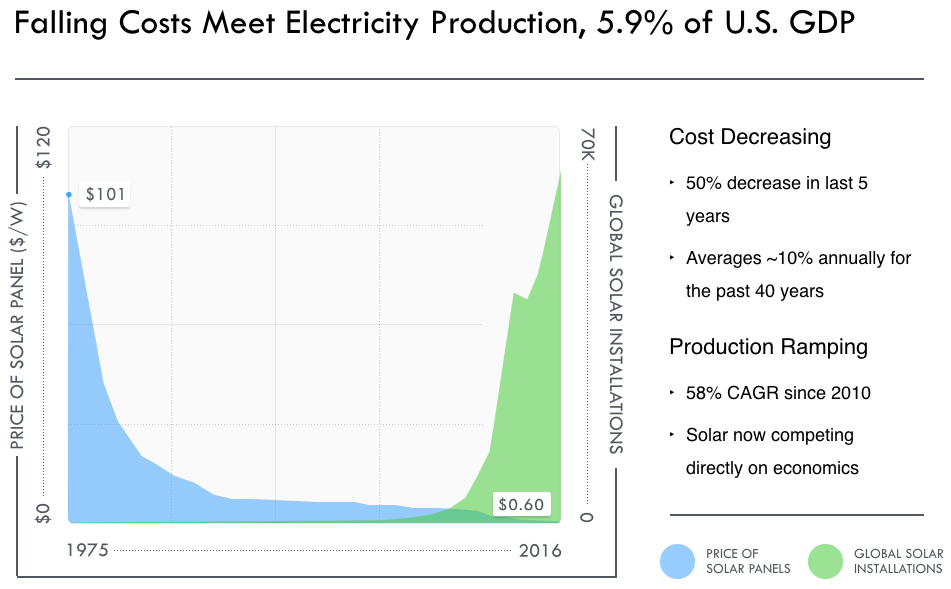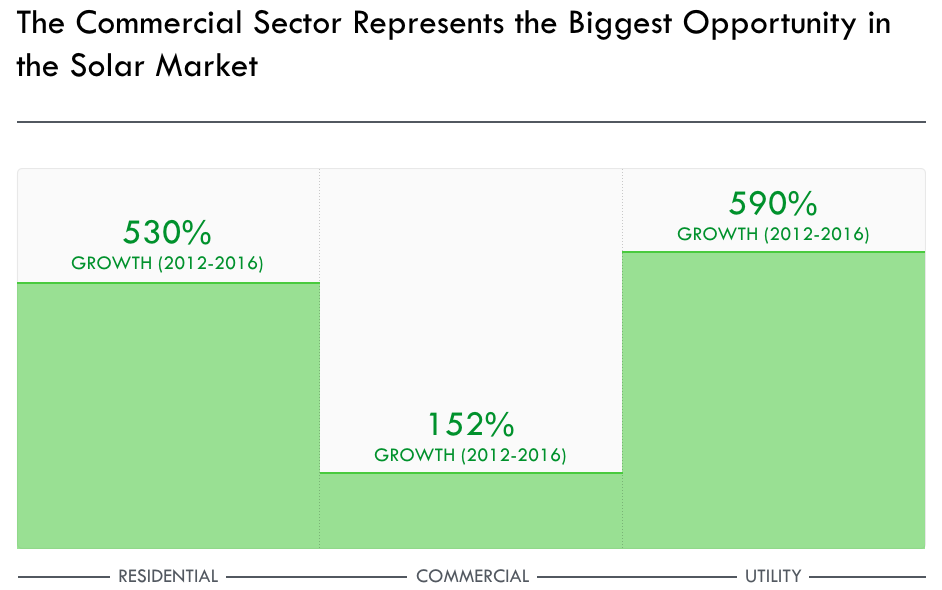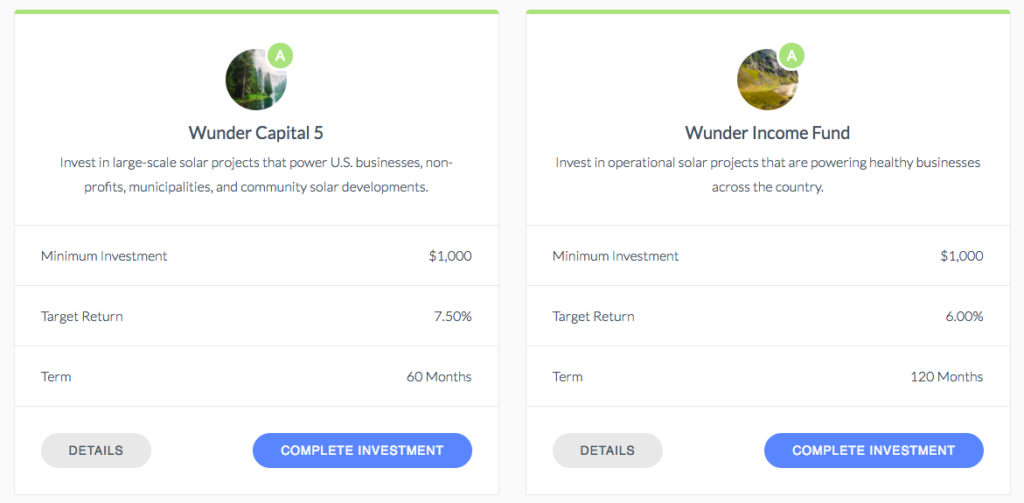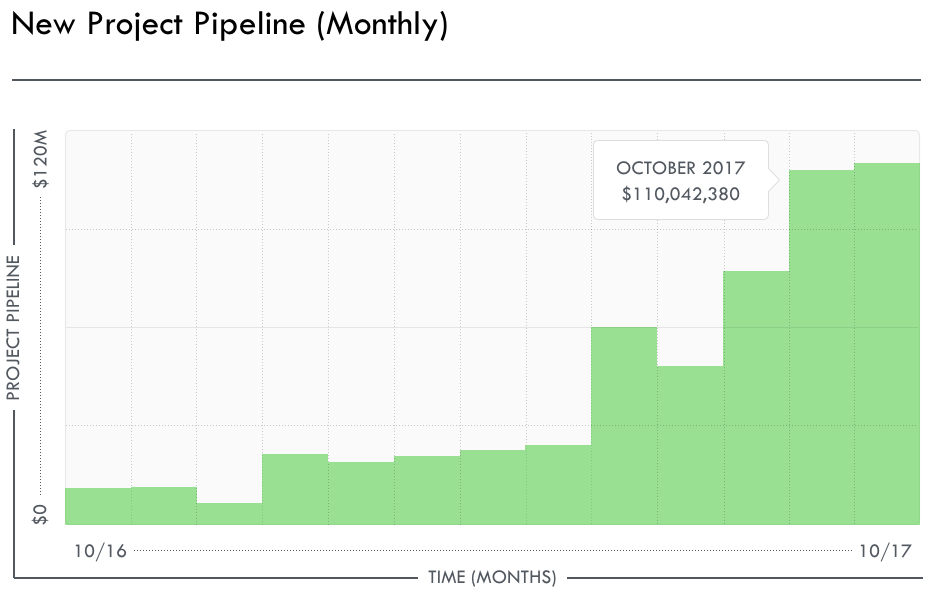

Lifestyle
Fight climate change while earning up to 7.5% annually?
Bloomberg New Energy Finance estimates that investment opportunity in the solar energy market through 2040 will be approximately $2.8 trillion. Much of that investment will come from governments and institutions. However, one firm, Wunder Capital, is allowing individuals to take part in the solar energy revolution by supporting small and medium-sized businesses and nonprofits as they make the transition to solar energy.
The massive growth seen in the solar energy sector over the last few years has been primarily driven by project economics. Meaning that solar is now cost competitive with traditional energy sources like coal and natural gas. Solar has achieved a remarkable cost decrease of ~10% annually for the last 40 years (see chart below).
Even though the cost of solar is now competitive with other energy sources in many US states, the upfront cost for small and medium-sized businesses as well as nonprofits is still prohibitively expensive (with an average system cost of a few hundred thousand dollars). Because of this, the commercial solar sector has grown much more slowly when compared to the residential and utility-scale solar sectors (see graph below).
Wunder Capital’s mission to help fix that — by providing simple, cost-effective financing solutions to qualified borrowers across the US to help them go solar, and save money each month on their energy bills. Wunder Capital has a network of 155 solar installers and developers across 30 states who send them projects to review on a weekly basis.
To date, Wunder Capital has completed over 175+ solar financings across the US. Wunder’s 2017 Year-in-Review includes some impressive stats.
None of Wunder’s solar loan portfolios have suffered any losses or write-offs, meaning that investors’ projected returns have been met. Wunder Capital has two funds currently available for investors: the Wunder Income Fund and Wunder Capital 5.
Wunder’s newest fund, Wunder Capital 5, was launched this past October, and has raised over $12M. Wunder has achieved record project pipeline numbers in the last several months, with over $110M in commercial solar projects in October alone (chart below).
Here’s a quote from a current Wunder investor, and his experience thus far with Wunder Capital.
I liked the market space Wunder looked to serve. Solar is but one of the many great ideas to keep literal energy flowing through the economy while leveraging established infrastructure and resources. The missing piece seemed to always be financing a long term investment in an economy built on short term results. Wunder spoke to this well and I bought in. —Wunder investor Skip Larson.
About Wunder Capital: Wunder is a financial technology company that is based out of Boulder, Colorado. Founded in 2013, Wunder won the US Department of Energy’s 2014 Sunshot Challenge, as well as COSEIA’s 2015 Summit Award. Wunder also participated in the Techstars technology accelerator program. Although Wunder’s solar funds are capitalized by individual accredited investors, the parent company and the operator of each of Wunder’s solar funds — The Wunder Company — is backed by venture capital (from the likes of Techstars Ventures, Fenway Summer, and Fintech Collective as well as others).
 About the Author: Bryan Birsic is the Founder and CEO of Wunder Capital and brings extensive finance and capital raising expertise to Wunder, from private equity investing at Bain & Company to financing online commercial lending companies at Village Ventures. Notably, Bryan’s firm led early investments into commercial lending market leader OnDeck Capital. Along with his finance background, Bryan has built and led several companies that bring software approaches to new markets, most notably and recently SimpleReach, where Bryan was President and which has raised more than $15mm. Bryan attended Williams College, and moved with his family to Boulder from New York City several years ago.
About the Author: Bryan Birsic is the Founder and CEO of Wunder Capital and brings extensive finance and capital raising expertise to Wunder, from private equity investing at Bain & Company to financing online commercial lending companies at Village Ventures. Notably, Bryan’s firm led early investments into commercial lending market leader OnDeck Capital. Along with his finance background, Bryan has built and led several companies that bring software approaches to new markets, most notably and recently SimpleReach, where Bryan was President and which has raised more than $15mm. Bryan attended Williams College, and moved with his family to Boulder from New York City several years ago.
This article was supported by Bryan Birsic of Wunder Capital. For more information, contact brands@teslarati.com.

Lifestyle
Tesla Model S Plaid battles China’s 1500 hp monster Nurburgring monster, with surprising results
There is just something about Tesla’s tuning and refinement that makes raw specs seem not as game-changing.

The Tesla Model S Plaid has been around for some time. Today, it is no longer the world’s quickest four-door electric sedan, nor is it the most powerful. As per a recent video from motoring YouTube channel Carwow, however, it seems like the Model S Plaid is still more than a match for some of its newer and more powerful rivals.
The monster from China
The Xiaomi SU7 Ultra is nothing short of a monster. Just like the Model S Plaid, it features three motors. It also has 1,548 hp and 1,770 Nm of torque. It’s All Wheel Drive and weighs a hefty 2,360 kg. The vehicle, which costs just about the equivalent of £55,000, has been recorded setting an insane 7:04.957 at the Nurburgring, surpassing the previous record held by the Porsche Taycan Turbo GT.
For all intents and purposes, the Model S Plaid looked outgunned in Carwow’s test. The Model S Plaid is no slouch with its three motors that produce 1,020 hp and 1,420 Nm of torque. It’s also a bit lighter at 2,190 kg despite its larger size. However, as the Carwow host pointed out, the Model S Plaid holds a 7:25.231 record in the Nurburgring. Compared to the Xiaomi SU7 Ultra’s record, the Model S Plaid’s lap time is notably slower.
Real-world tests
As could be seen in Carwow’s drag races, however, Tesla’s tech wizardry with the Model S Plaid is still hard to beat. The two vehicles competed in nine races, and the older Model S Plaid actually beat its newer, more powerful counterpart from China several times. At one point in the race, the Xiaomi SU7 Ultra hit its power limit due to its battery’s temperature, but the Model S Plaid was still going strong.
The Model S Plaid was first teased five years ago, in September 2020 during Tesla’s Battery Day. Since then, cars like the Lucid Air Sapphire and the Xiaomi SU7 Ultra have been released, surpassing its specs. But just like the Model Y ended up being the better all-rounder compared to the BYD Sealion 7 and the MG IM6, there is just something about Tesla’s tuning and refinement that makes raw specs seem not as game-changing.
Check out Carwow’s Model S Plaid vs Xiaomi SU7 drag race video below.
Lifestyle
500-mile test proves why Tesla Model Y still humiliates rivals in Europe
On paper, the BYD Sealion 7 and MG IM6 promised standout capabilities against the Model Y.

BYD is seeing a lot of momentum in Europe, so much so that mainstream media has taken every opportunity to argue that the Chinese automaker has beaten Tesla in the region. But while BYD sales this year in Europe are rising and Tesla’s registrations remain challenged, the raw capabilities of vehicles like the Model Y are difficult to deny.
This was highlighted in a 500-mile challenge by What Car? magazine, which showed that the new Tesla Model Y is more efficient, cheaper to run, and more reliable than rivals like the BYD Sealion 7, and even the nearly 400 KW-charging MG IM6.
Range and charging promises
On paper, the BYD Sealion 7 and MG IM6 promised standout capabilities against the Model Y. The Sealion 7 had more estimated range and the IM6 promised significantly faster charging. When faced with real-world conditions, however, it was still the Model Y that proved superior.
During the 500-mile test, the BYD nearly failed to reach a charging stop, arriving with less range than its display projected, as noted in a CarUp report. MG fared better, but its charging speeds never reached its promised nearly-400 kW charging speed. Tesla’s Model Y, by comparison, managed energy calculations precisely and arrived at each stop without issue.
Tesla leads in areas that matter
Charging times from 25% to 80% showed that the MG was the fastest at 17 minutes, while Tesla and BYD were close at 28 and 29 minutes, respectively. Overall efficiency and cost told a different story, however. The Model Y consumed 19.4 kWh per 100 km, compared to 22.2 for MG and 23.9 for BYD. Over the full trip, Tesla’s charging costs totaled just £82 thanks to its supercharger network, far below BYD’s £130 and MG’s £119.
What Car? Magazine’s testers concluded that despite BYD’s rapid sales growth and the MG IM6’s seriously impressive charging speeds, Tesla remains the more compelling real-world choice. The Model Y just offers stability, efficiency, and a proven charging infrastructure through its Supercharging network. And as per the magazine’s hosts, the Model Y is even the cheapest car to own among the three that were tested.
Watch What Car? Magazine’s 500-mile test in the video below.
Lifestyle
Tesla Cybertruck slapped with world’s least intimidating ticket, and it’s pure cringe
One cannot help but cringe and feel second-hand embarrassment at the idea of a person just driving around with a stack of these babies.

A Cybertruck parked at Stanford Shopping Center in California was recently hit with what might be the most try-hard piece of paper ever slipped under a wiper blade: a “fake citation” accusing the driver of supporting a “fascist car.”
The note, shared on X by Tesla staff program manager Ryan Torres, quickly made the rounds on X, where it quickly gained attention as an example of how not to protest.
The world’s least intimidating ticket
According to the citation, the supposed “violation” was “driving a fascist car.” The remedial action? Take the bus, call an Uber, or ride a bike. The note also dubbed Elon Musk a “chainsaw-wielding Nazi billionaire.” Now, protests against Tesla and Elon Musk have become commonplace this year, but one cannot help but cringe and feel second-hand embarrassment at the idea of a person just driving around with a stack of fake anti-Tesla/Musk citations.
Torres pointed out the irony himself in his post on X. Tesla currently employs over 140,000 Americans, and SpaceX has put the U.S. firmly back at the top of space technology. As Torres put it, maybe the person behind the world’s least intimidating ticket should “read a book on innovation before vandalizing” other people’s property.
Peak performative clownery
Not to mention that the fake ticket’s logic collapses under its own weight. EVs like the Cybertruck are literally designed to reduce emissions, not “destroy the economy.” If anything, Tesla has bolstered the United States’ economy by fueling jobs in engineering, manufacturing, and clean energy. It’s not the first time a Tesla has been the target of vandalism or politically charged notes, but this one stands out for sheer cringe value.
Torres summed it up neatly: “Peak clownery.” On that point, at least, the citation earns full marks. In a way, though, perhaps cringe fake tickets are not as bad as the literal firebombs that were being thrown at Tesla stores and cars earlier this year because some critics were gleefully misinformed about Elon Musk.













